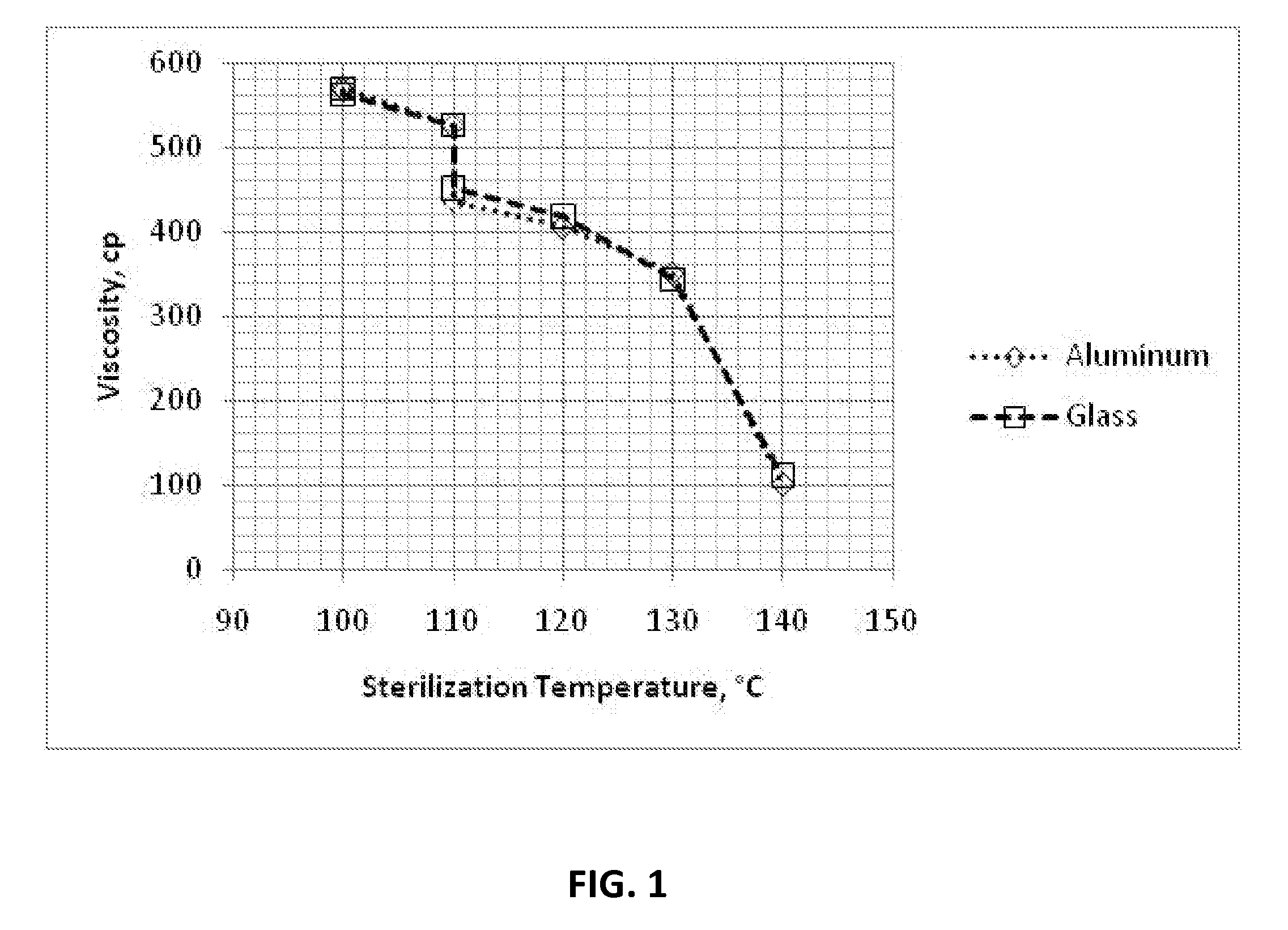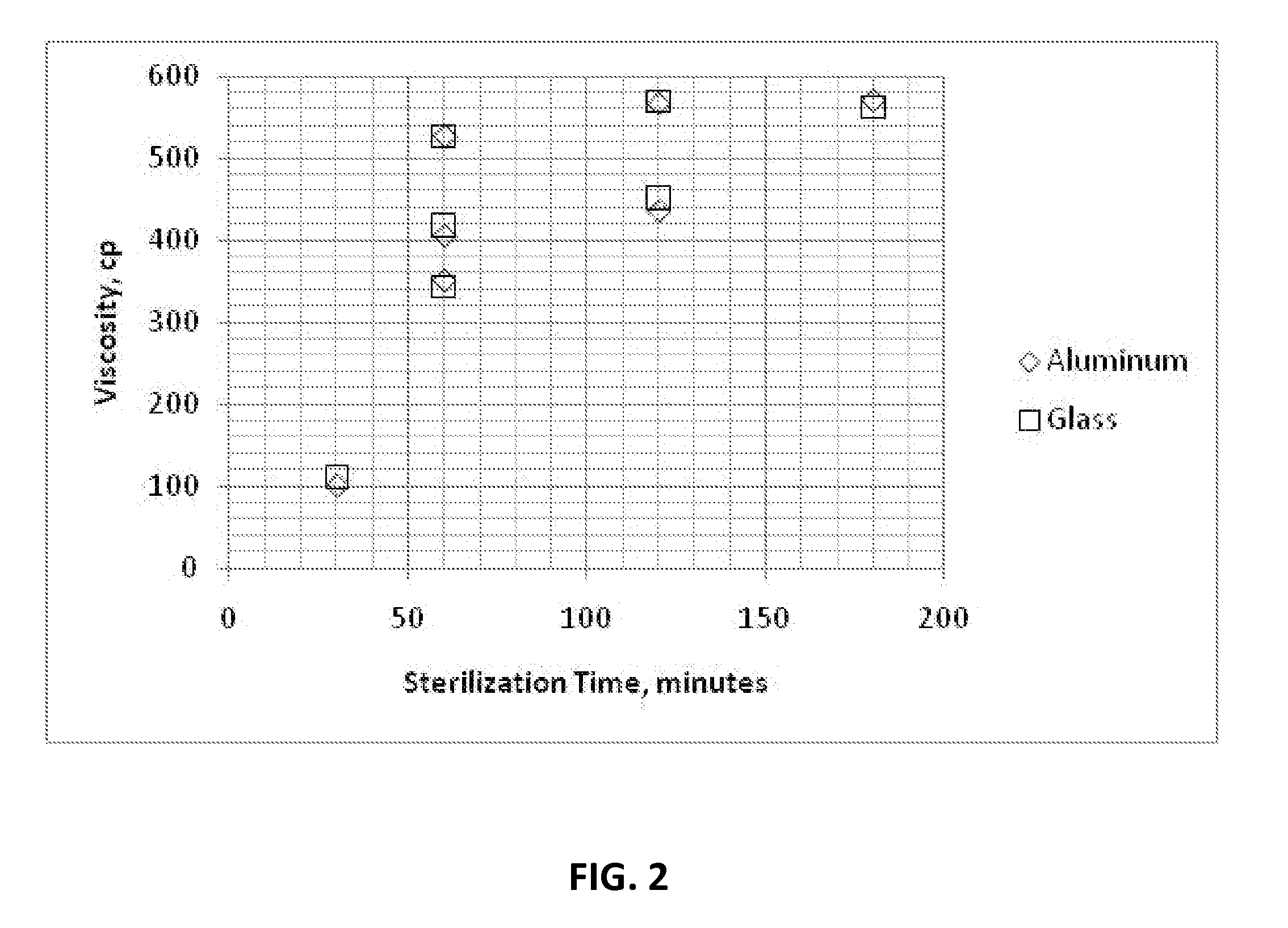Cyanoacrylate Adhesive Compositions and Devices and Process for Sterilization Thereof
a technology of cyanoacrylate and composition, applied in the field of composition of cyanoacrylate monomer and polymer adhesive composition, can solve the problems of premature polymerization of monomers, limiting the ability of formulators to formulate adhesive compositions with desirable stability and flow, and spreading of adhesive into undesired areas
- Summary
- Abstract
- Description
- Claims
- Application Information
AI Technical Summary
Problems solved by technology
Method used
Image
Examples
example i
Sample Testing (Sterility Test Method for all Samples)
[0030]The method was tested by first performing the USP bacteriostasis and fungistasis test on glass vials and aluminum tubes. The sterility test was performed by obtaining spores of Bacillus subtillis var. niger suspended in irrigation water at a concentration of 2.3×108 / ml. Aliquots of 0.48 ml of these spores were placed in glass serum bottles, lyophilized and then reconstituted with 50 ml of n-butyl or 2-octylcyanoacrylate compositions to obtain a volume of 50 ml of inoculated spore solution with a concentration of 2×106 / ml. These cyanoacrylate spore solutions were used to fill the tubes and vials for the sterilization trials at different temperatures and times and for the non sterilized (standard biological indicators) control vials and tubes. Each tube and vial was filled with a volume of 0.5 to 0.6 ml of a cyanoacrylate composition that rendered a spore concentration of 2×106 / ml. Non sterilized biological indicator standard...
example ii
Sample Composition Preparation
[0042]Sample II A:
[0043]A sample of n-butyl cyanoacrylate (n-BCA) with a viscosity of 2.8 cp (measured with a Brookfield DV-II at 25° C.) containing 100 ppm of SO2 and 1000 ppm of butylated hydroxyanisole (BHA) was prepared for this example. Then, the composition was inoculated with BIs such as borosilicate spore discs, cotton threads and spore wires with a spore concentration of 1×106 / ml Geobacillus stearothermophilus. The spore-inoculated composition was deposited in type I borosilicate glass threaded vials with an Eppendorf automatic pipette and sealed with threaded phenol caps with silicone / Teflon® septa. Some inoculated vials were not sterilized and were used as positive standard biological indicators to indicate viable spores. The rest of the inoculated sealed vials were exposed to the experimental temperatures and times stipulated in the sterilization testing protocol conditions.
[0044]Table 4 shows example results.
TABLE 4n-BCA monomer sterilizati...
example iii
[0050]Samples of polymer modified 2-octyl (2-OCA) and n-butyl (n-BCA) cyanoacrylates stabilized with 100 ppm of SO2 and 1000 ppm of BHA were filled and sealed in plastic HDPE pipettes with cotton thread BIs added with a spore population of 1×106 / ml. All samples were filled using an Eppendorf automatic pipette. Two samples were not sterilized and were used as positive controls.
TABLE 6Samples containing a thick formulated mixture of 2-octyl and butylcyanoacrylate monomers with Bacillus subtillis biological cottonthread indicators packed in plastic HDPE pipettes.Number ofSterilizationSterilizationIncubationNumber ofpositiveNumber oftemperaturetimeType oftemperaturesamplescontrolsdaysNumber of° C.minutesmedia 400 ml° C.testedtestedincubatedpositives110180SCDB30-3515N / A70Lot#06L1201110180SCDB30-3515N / A70Lot#06L0601No0SCDB30-35N / A272
[0051]Table 6 above shows samples with a sterilization temperature of 110 C, incubation temperature, incubation time and the results obtained for samples and ...
PUM
| Property | Measurement | Unit |
|---|---|---|
| Temperature | aaaaa | aaaaa |
| Temperature | aaaaa | aaaaa |
| Temperature | aaaaa | aaaaa |
Abstract
Description
Claims
Application Information
 Login to View More
Login to View More - R&D
- Intellectual Property
- Life Sciences
- Materials
- Tech Scout
- Unparalleled Data Quality
- Higher Quality Content
- 60% Fewer Hallucinations
Browse by: Latest US Patents, China's latest patents, Technical Efficacy Thesaurus, Application Domain, Technology Topic, Popular Technical Reports.
© 2025 PatSnap. All rights reserved.Legal|Privacy policy|Modern Slavery Act Transparency Statement|Sitemap|About US| Contact US: help@patsnap.com



